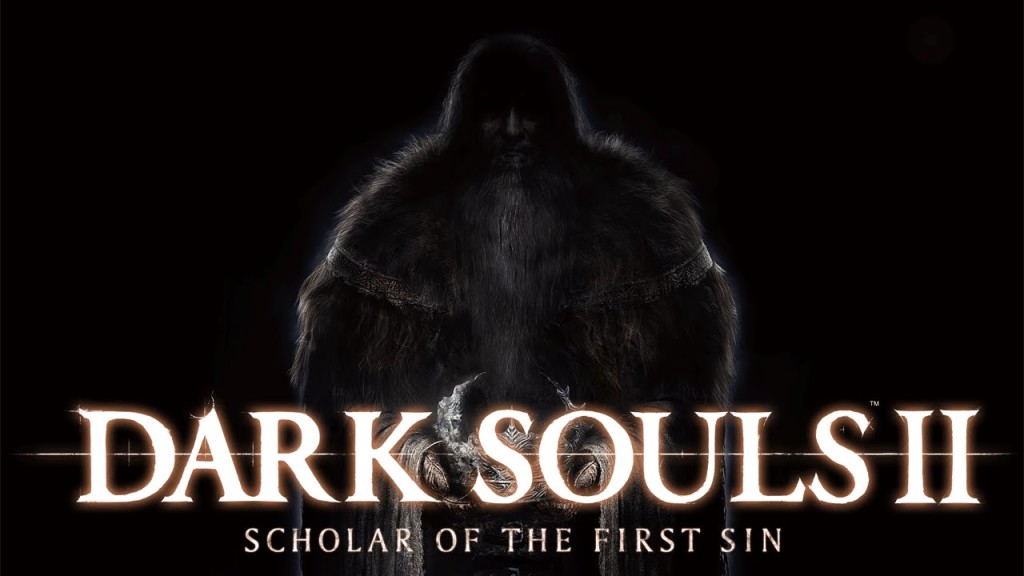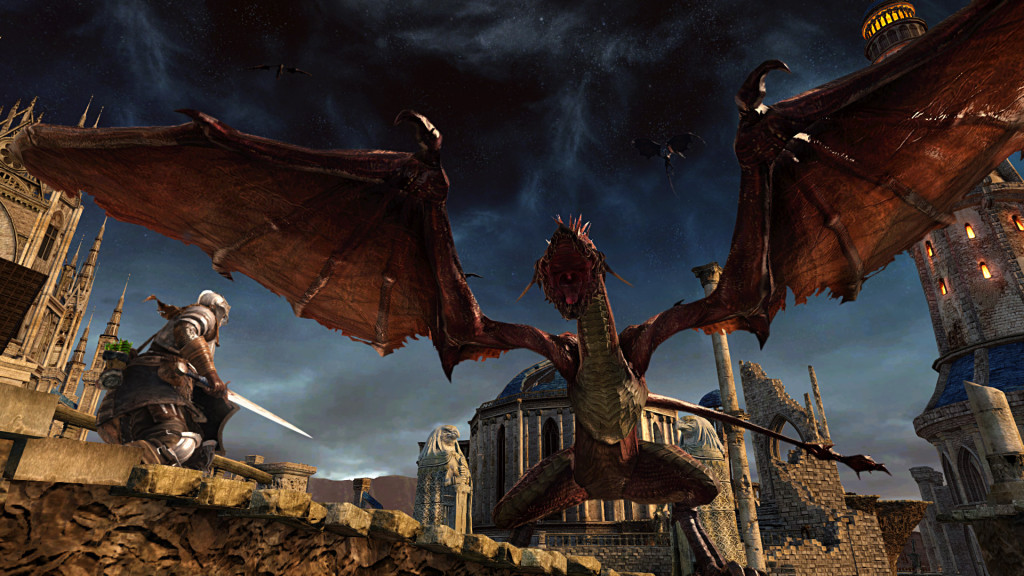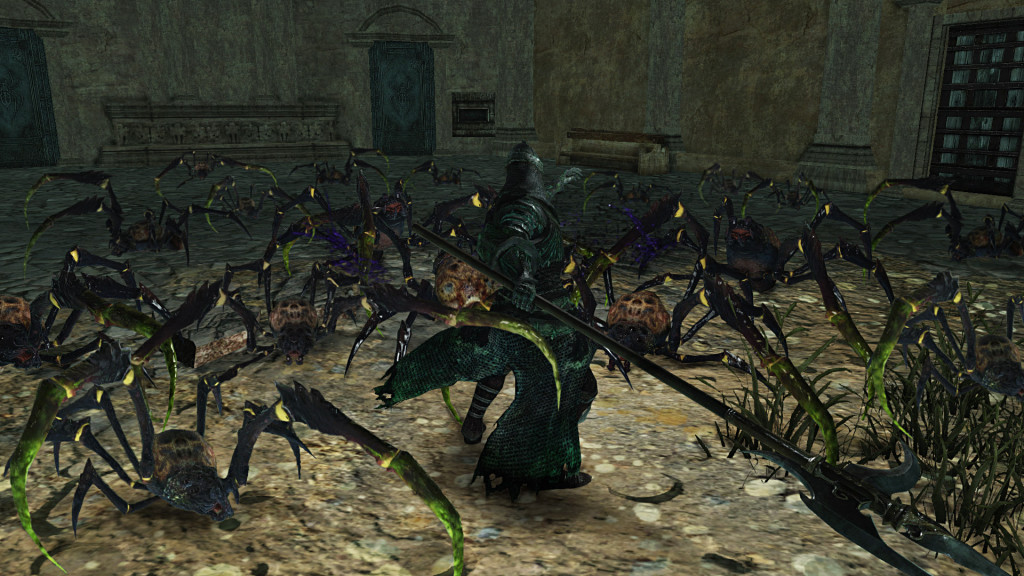Last updated on April 21, 2016
 Scholar of the First Sin sits in this weird middle-space of re-releases. More a “remastering” than a straight remake, people who played (and were disappointed by) the original Dark Souls II might wonder whether it’s worth their time to jump into the game once again. Well, I am here, emerging from the completion (and I mean completion) of the entirety of Scholar to tell you. I killed every boss that a person could possibly kill, with a pure melee build, and while it took me a while, I can’t say I didn’t enjoy it! Those 60 hours provided a lot of insight into the re-design of the game, to be sure.
Scholar of the First Sin sits in this weird middle-space of re-releases. More a “remastering” than a straight remake, people who played (and were disappointed by) the original Dark Souls II might wonder whether it’s worth their time to jump into the game once again. Well, I am here, emerging from the completion (and I mean completion) of the entirety of Scholar to tell you. I killed every boss that a person could possibly kill, with a pure melee build, and while it took me a while, I can’t say I didn’t enjoy it! Those 60 hours provided a lot of insight into the re-design of the game, to be sure.
For those of you simply interested in a review of the original Dark Souls II, it’s recommend you read THIS REVIEW first. Many of the complaints I had with Dark Souls II are discussed in full, except for the notable addendum that the weapon durability system was a bug and has been fixed. Every other criticism still stands, however. Also, for your enjoyment I reviewed each DLC separately, as they’ve remained relatively unchanged from their first incarnation:
- Review – Dark Souls II: Crown of the Sunken King (***** stars)
- Review – Dark Souls II: Crown of the Ivory King (***** stars)
- Review – Dark Souls II: Crown of the Old Iron King (**** stars)
With those caveats out of the way (and a substantial reading list, goodness), along with a SPOILERS tag, what do we have here with Scholar of the First Sin’s re-design?

Enemy layouts changed substantially, for one. Forest of Fallen Giants and Heide’s Tower of Flame are especially noticeable, with tons of soldiers in the former and the actual addition of Heide Knights (seriously) in the latter. The lack of Heide Knights in particular seemed a strange omission in the original release, now corrected, and other such examples (which I’ll leave to the imagination) persist throughout. As for the starting area, they’ve upped the difficulty significantly by simply introducing tons of enemies. If you didn’t like multi-enemy combat in the base game, this certainly won’t work for your either, but that initial difficulty spike does familiarize you with how many of the other areas work. Take it slow, and you’ll only need to fight 2-3 enemies at most. For those who played the game the first time, I’d say the remixed enemy layouts are a good enough reason to take up the mantle of the chosen Undead, since From Software often surprises you with new traps and obstacles.
In terms of lore and story, these enemy formations makes Scholar much more consistent with that story versus the confusing choices of the original game. Some of the areas actually do the inverse of the original, with formerly aggressive enemies now being respectful of you…assuming you don’t play the game like the original, and start attacking them (again, lore consistent, but also hilarious to be chased by 9-10 heavily armored knights for no reason other than my own hubris). Like the DLC content, From Software wants to play, and take advantage of, your expectations and deliver a fundamentally different experience.
Suffice to say, if you enjoyed Dark Souls II in any capacity, this version gives a far better sense of Souls than the first iteration. Add the presence of former bosses in later areas, and things become…interesting, to say the least! I like the way it plays against your trained expectations, both for those who played the initial release and newer players. At the same time, it does make it much, much harder than it was initially, which makes me question who this is for. Probably people like me, who didn’t exactly love the original release. More than anything, it confirms that Dark Souls II remains unfinished, and Scholar finishes that unfinished game.

Let’s take the enemy numbers as an example. Are there more enemies in general? I’d say, absolutely. You literally cannot run through an area unless you already know how to get to the other side. This is a major change from Dark Souls II, where running through areas became possible just via the enemies who couldn’t really chase you very far. Now, there are a TON of enemies in the Shrine of Amarna and they will kill you unless you take your time and take it slow. The aggro radius will ensure multiple mages attack you if you move too fast, and that’s a recipe for disaster in an area where you could fall to your doom in the mysteries of shallow water. I like this change, precisely because it evokes the sense of danger you obtained from the original Dark Souls. While not an exact match, it seems to me a clear attempt to emulate Dark Souls I, and the fact they took the effort to implement this change helps in the longevity of this release.
And, in a way, this works because enemies follow you to the ends of the earth – i.e., they literally chase you as far as they can go. This seems to vary from enemy to enemy, and limited by terrain or AI-pathing. Not surprisingly, this means the cheese tactics of Dark Souls II still work on a variety of situations (doorways are your best friend), and poison arrows can save melee-only players like me a lot of hassle. I’m fairly disappointed in this, as I imagined the AI would chase me far beyond any reasonable distance, but that added aggression also makes them more susceptible to ranged attacks outside of their attack range. Now, they just back off when they hit some invisible wall, and it truly breaks immersion.
There are, of course, non-fighting related changes. Better lightning effects generally to re-capture the focus on “darkness” of the game’s pre-release trailers. Now, you probably will need a torch to light large portions of the game, assuming you leave the brightness settings on default. Otherwise, the game still retains that decrepit, forgotten look with washed-out textures and the like (more than likely due to the absence of specialized lighting that was supposed to make them look very nice). Still, there’s no real reason to do that, and I honestly jacked the lighting settings up because, seriously, if I can avoid a problem like that, I will. I suppose we could consider it cheating a bit! For the optimal experience, leave the lighting slide on the default setting, so that you can get a taste of the original “vision” of the early pre-release trailers.
